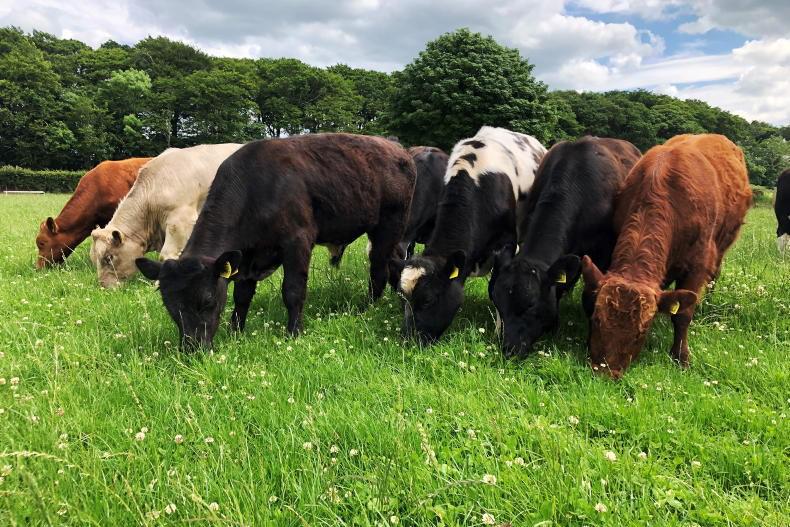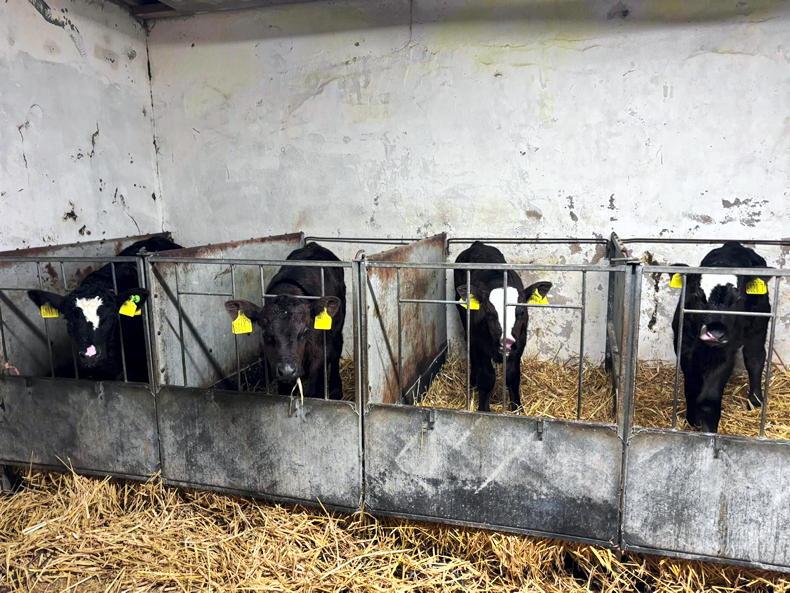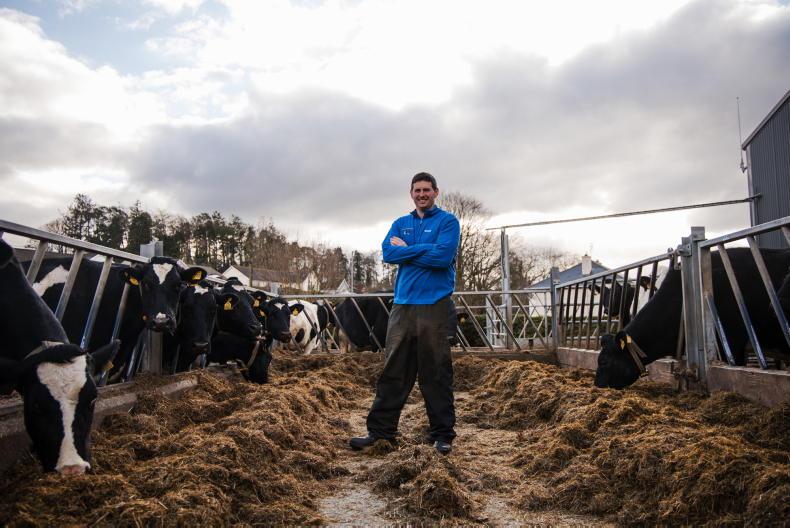As June comes to a close, grazing will enter the second half of the season. How well swards are managed over the next few weeks will have a big bearing on grass growth over the summer, as well as sward quality.
Well managed swards will ensure good-quality grass is in front of cattle, driving performance. Outlined are five tips to set grazing up for the summer period.
Get on top of heavy covers now
Plenty of farmers still have surplus grass in front of cattle and heavy swards need to be addressed as a priority. Ideally, take out surplus grass as silage using owned equipment or by a contractor.
But if there are only a couple of acres to bale, a contractor can be hard to get unless they are working nearby.
So, if baling surplus grass is not an option, consider strip grazing through heavier swards. Move the fence daily to provide fresh grass and improve utilisation.
With this option, the aim is to work through grass as quickly as possible. Don’t delay moving the fence just because the sward hasn’t been grazed as tight as you would like.
With heavy covers, clean out will be poor. Just focus on grazing off the best of the grass and top what is left behind.
Pre-mowing can be an option if the area is limited to a couple of acres. Mow a couple of grass strips every day and use an electric fence to control intakes.
However, if swards have noxious weeds such as ragwort, under no circumstances should you pre-mow grass.
Topping
As grass has reached the heading out phase, grazing utilisation is poor and high levels of stem are left behind as cattle are removed from paddocks.
Topping paddocks after cattle leave is a must to clean off the rejected grass. This provides a clean sward base that ensures high-quality grass in the next rotation.
If paddocks are not topped, the grass left behind tends to turn white and die back. This limits grass growth over the summer and cattle performance will suffer.
Fertiliser
Once heavy covers are removed and paddocks topped, keep on top of fertiliser applications. Spreading 20 to 25 units/ac will suffice after each rotation in July. Opt for a fertiliser with added sulphur, as well as a small amount of P and K if soil fertility is low.
Rotation length
During July, work to a grazing rotation between 14 and 21 days, depending on the size of the grazing area, number of stock and grass quality.
This will ensure cattle are moving around the rotation fast enough to keep on top of good-quality grass covers and improve utilisation.
Walk swards every week
Walking swards once per week should be part and parcel of grassland management, yet very few farmers actually take the time to do it.
When farmers do walk swards, they are quick to see which paddocks need more fertiliser, which paddocks can be taken out of the rotation and which paddocks should be prioritised for grazing.
This leaves farmers better positioned to manage grass during the summer period.
Read more
New slurry dates and nitrogen limits on way
Thrive: 2020-born dairy-beef stock – sell or finish?
As June comes to a close, grazing will enter the second half of the season. How well swards are managed over the next few weeks will have a big bearing on grass growth over the summer, as well as sward quality.
Well managed swards will ensure good-quality grass is in front of cattle, driving performance. Outlined are five tips to set grazing up for the summer period.
Get on top of heavy covers now
Plenty of farmers still have surplus grass in front of cattle and heavy swards need to be addressed as a priority. Ideally, take out surplus grass as silage using owned equipment or by a contractor.
But if there are only a couple of acres to bale, a contractor can be hard to get unless they are working nearby.
So, if baling surplus grass is not an option, consider strip grazing through heavier swards. Move the fence daily to provide fresh grass and improve utilisation.
With this option, the aim is to work through grass as quickly as possible. Don’t delay moving the fence just because the sward hasn’t been grazed as tight as you would like.
With heavy covers, clean out will be poor. Just focus on grazing off the best of the grass and top what is left behind.
Pre-mowing can be an option if the area is limited to a couple of acres. Mow a couple of grass strips every day and use an electric fence to control intakes.
However, if swards have noxious weeds such as ragwort, under no circumstances should you pre-mow grass.
Topping
As grass has reached the heading out phase, grazing utilisation is poor and high levels of stem are left behind as cattle are removed from paddocks.
Topping paddocks after cattle leave is a must to clean off the rejected grass. This provides a clean sward base that ensures high-quality grass in the next rotation.
If paddocks are not topped, the grass left behind tends to turn white and die back. This limits grass growth over the summer and cattle performance will suffer.
Fertiliser
Once heavy covers are removed and paddocks topped, keep on top of fertiliser applications. Spreading 20 to 25 units/ac will suffice after each rotation in July. Opt for a fertiliser with added sulphur, as well as a small amount of P and K if soil fertility is low.
Rotation length
During July, work to a grazing rotation between 14 and 21 days, depending on the size of the grazing area, number of stock and grass quality.
This will ensure cattle are moving around the rotation fast enough to keep on top of good-quality grass covers and improve utilisation.
Walk swards every week
Walking swards once per week should be part and parcel of grassland management, yet very few farmers actually take the time to do it.
When farmers do walk swards, they are quick to see which paddocks need more fertiliser, which paddocks can be taken out of the rotation and which paddocks should be prioritised for grazing.
This leaves farmers better positioned to manage grass during the summer period.
Read more
New slurry dates and nitrogen limits on way
Thrive: 2020-born dairy-beef stock – sell or finish?










SHARING OPTIONS